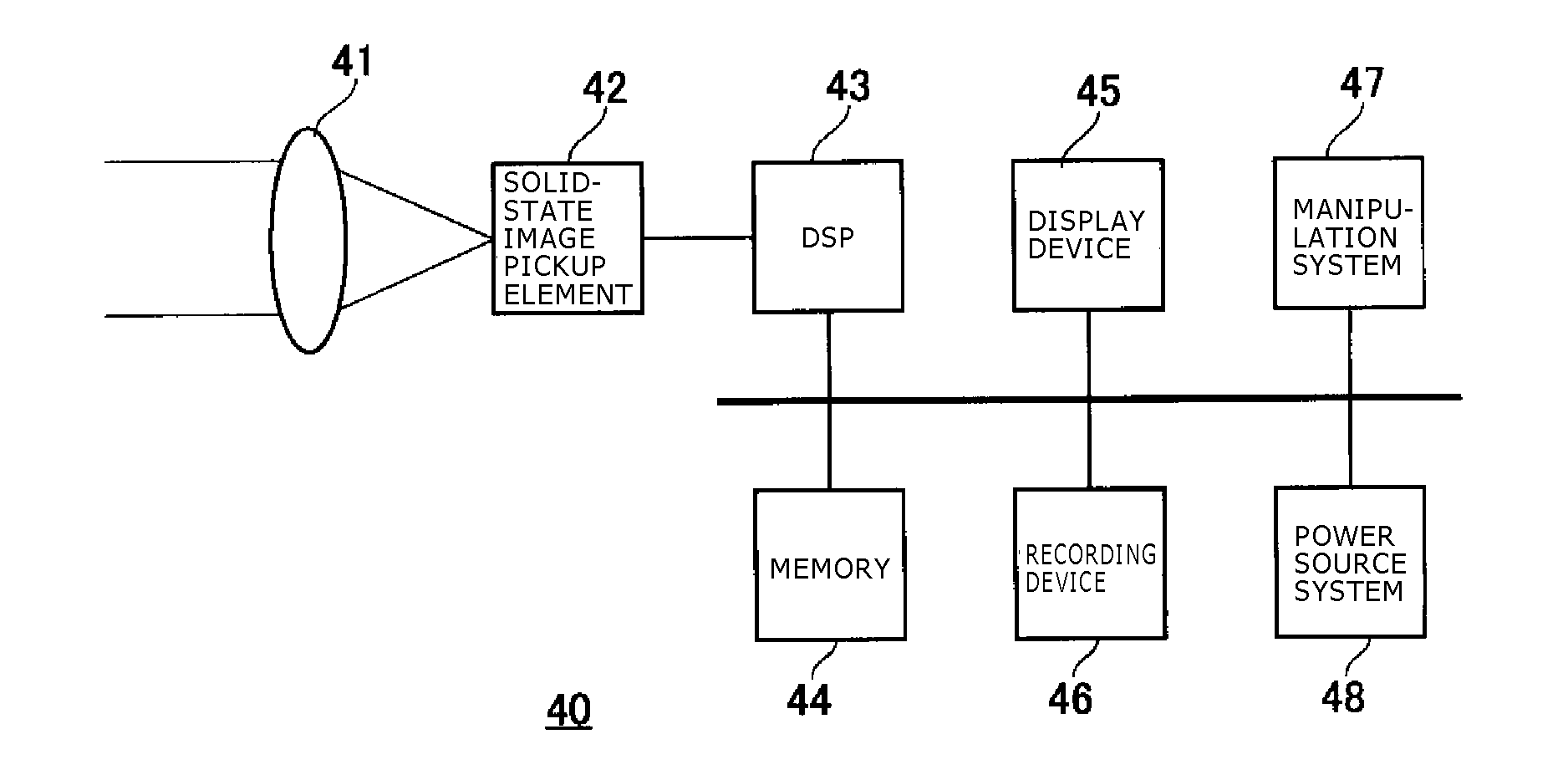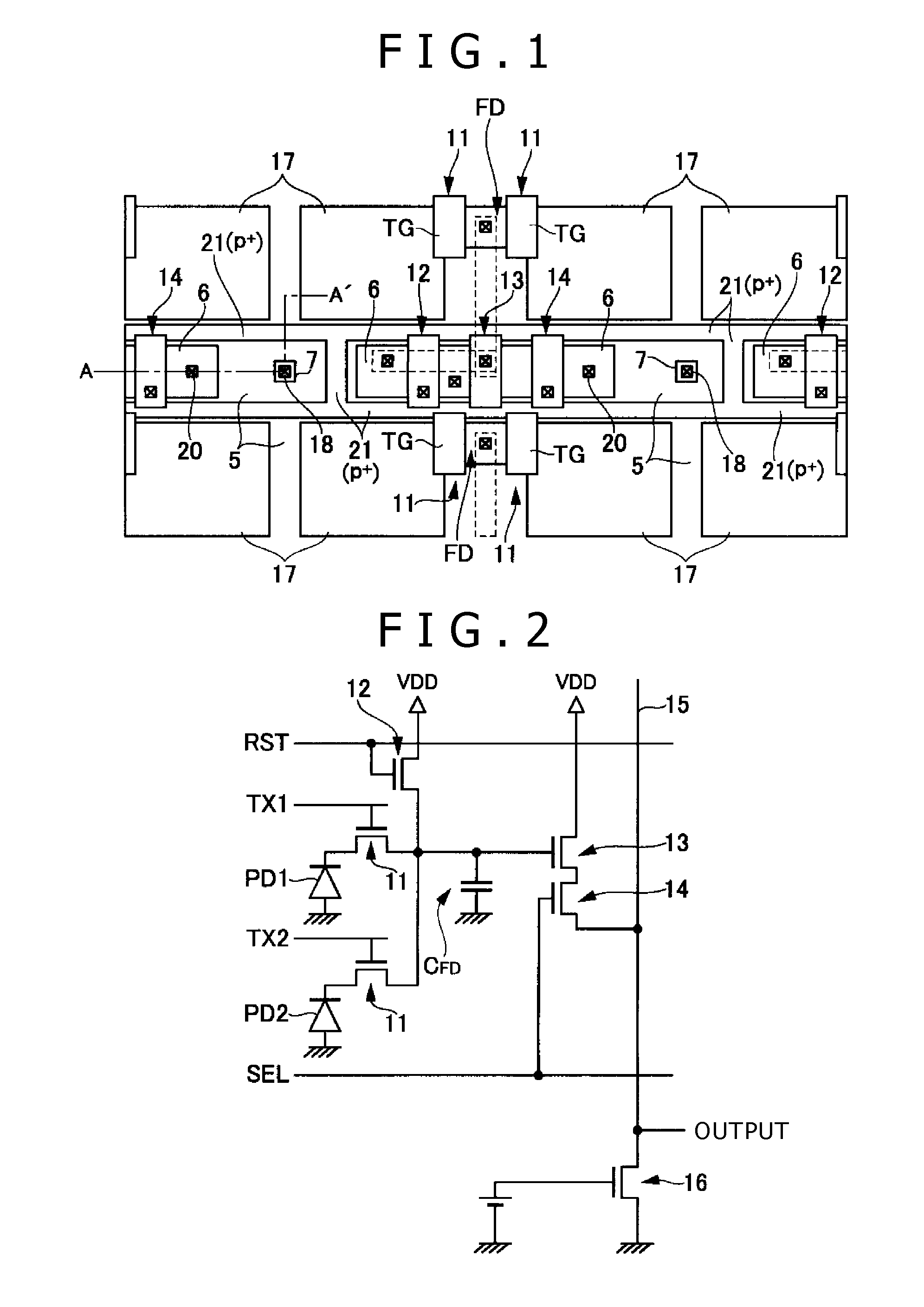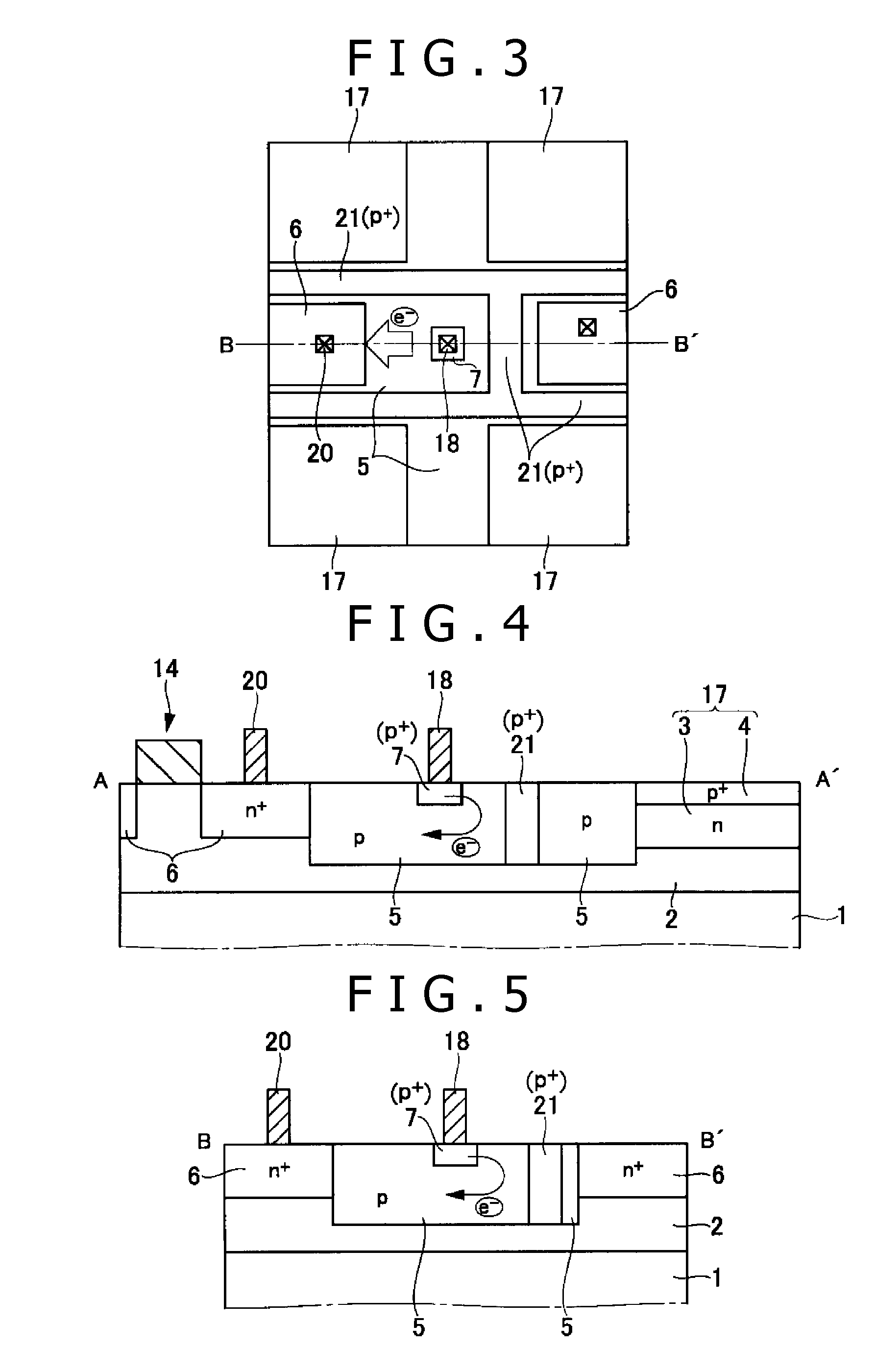Solid-state image pickup element and image pickup apparatus
a pickup element and solid-state technology, applied in the direction of television system scanning details, radioation control devices, television systems, etc., can solve problems such as deteriorating image quality, and achieve the effect of satisfying image quality, and suppressing or preventing the generation of dark currents
- Summary
- Abstract
- Description
- Claims
- Application Information
AI Technical Summary
Benefits of technology
Problems solved by technology
Method used
Image
Examples
first embodiment
2. First Embodiment
[0134]Subsequently, concrete embodiments of the present invention will be described below.
[0135]FIG. 1 is a top plan view showing a schematic structure of a main portion of a solid-state image pickup element according to a first embodiment of the present invention. Also, FIG. 1 shows a top plan view of a part (two pixel length×four pixels width) of an image pickup area of the solid-state image pickup element.
[0136]It is noted that the entire configuration of the solid-state image pickup element can be made identical to that shown in FIG. 20.
[0137]As shown in FIG. 1, a photoelectric conversion region 17 including a photodiode is formed in each of pixels. Three transistors of a reset transistor 12, an amplification transistor 13, and a selection transistor 14 are formed continuously as a set between the photoelectric conversion regions 17 of the pixels in an upper row, and the photoelectric conversion regions 17 of the pixels in a lower row.
[0138]A well contact 18 i...
second embodiment
3. Second Embodiment
[0180]FIG. 7 is a top plan view showing a schematic structure of a main portion of a solid-state image pickup element according to a second embodiment of the present invention. Also, FIG. 8 is an enlarged top plan view showing a structure of a portion in the vicinity of a well contact shown in FIG. 7.
[0181]In the second embodiment, the p+-type region 21 serving as the barrier is formed between the well contact 18 and the photoelectric conversion region 17.
[0182]That is to say, the p+-type region 21 is not formed between the n+-type region 6 of the reset transistor 12, and the well contact 18, although the p+-type region 21 is formed there in the first embodiment.
[0183]As a result, as indicated by arrows of FIG. 8, the electrons e− generated from the well contact 18 flow into the n+-type regions 6 at the both right and left sides of the well contact 18.
[0184]Since other structures in the second embodiment are the same as those in the first embodiment shown in FIGS...
third embodiment
4. Third Embodiment
[0189]FIG. 9 is a top plan view showing a schematic structure of a main portion of a solid-state image pickup element according to a third embodiment of the present invention. Also, FIG. 10 is a cross sectional view taken on line C-C′ of FIG. 9.
[0190]In the third embodiment, the disposition of the transistors within the pixel area is changed, whereby the n+-type regions 6 which are connected to power sources VDD, respectively, are disposed close to the well contact 18 so as to face both sides of the well contact 18, respectively.
[0191]That is to say, in the first embodiment, the three transistors 12, 13 and 14 are disposed as the continuous one set. On the other hand, in the third embodiment, as shown in FIG. 9, the reset transistor 12 is disposed independently of other two transistors, that is, the amplification transistor 13 and the selection transistor 14. In addition, of the two n+-type regions 6 of the reset transistor 12 and the amplification 13, the p+-type...
PUM
 Login to View More
Login to View More Abstract
Description
Claims
Application Information
 Login to View More
Login to View More - R&D
- Intellectual Property
- Life Sciences
- Materials
- Tech Scout
- Unparalleled Data Quality
- Higher Quality Content
- 60% Fewer Hallucinations
Browse by: Latest US Patents, China's latest patents, Technical Efficacy Thesaurus, Application Domain, Technology Topic, Popular Technical Reports.
© 2025 PatSnap. All rights reserved.Legal|Privacy policy|Modern Slavery Act Transparency Statement|Sitemap|About US| Contact US: help@patsnap.com



